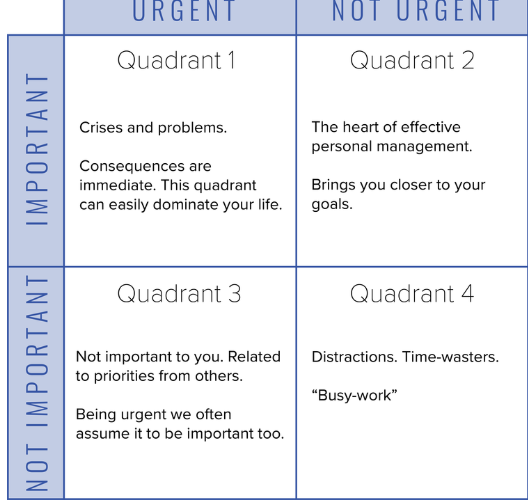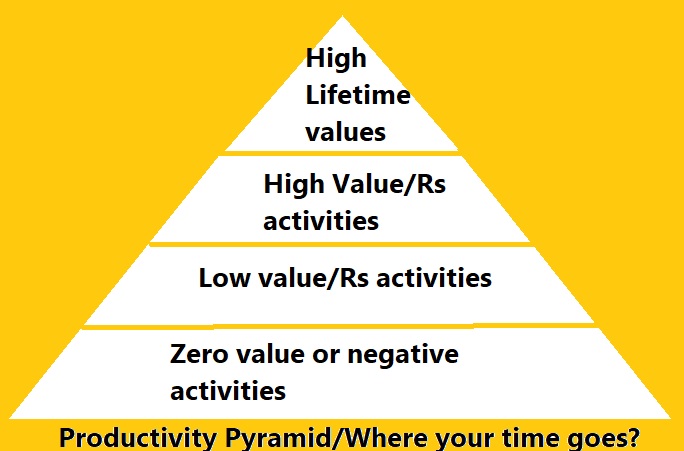Are you one of those dreaming of that elusive work-life balance? You have told time and again to maintain to-do lists or manage time but repeatedly you have found, it just doesn’t seem to work!
Then, let me tell you, you are not alone. Most people face this. In this article, I will share one of the most important shifts in thinking which every successful and productive people follow which not only guarantees work-life balance but actually you might even enjoy working more than earlier!
But before I explain about that, let me dispell some misconceptions about the way we are wrongly hard-wired and why we are destined to fail in time management in today’s world!
Why managing time fails
When I started my entrepreneurship, I was under the impression that I was good at managing my time. For 10+ years, I was playing the role of product manager and I had become good at it. I had a
So naturally, I thought maintaining a to-do list and managing time is the going to help me. But little did I know, time management fails us when we are in roles which demand activities which are of different value.
To drive this point, let me give an example of our student days or early part of the career. During student days or in the early part of the career, most of the tasks we are exposed are well defined.
If not to us, our parents, teachers or seniors at work knew what each task is and how much time it approximately takes. Though it was not clear how much time it takes for the individual based on his capability, but still activities were planned by assigning time. Time was allocated on difficulty then priority.
Take for example, during our studies, we had 6 subjects, and in the school time table, an equal amount of time is allocated for each subject. That is because each subject carried 100 marks.
There was nothing like Math is valued higher over language! It is another matter one person might find math difficult over language or the other way. But subjects carried equal marks and time allocated equally!
But as you enter the real world, and as one moves to roles such as leadership, running a business, we get exposed to a diverse set of activities.
In this environment, can assigning equal value to all activities is not the best way?
Come to the world of priorities
So we are in a world of a diverse set of activities each having its own value and what works is not managing time but it is about managing priorities.
Manage priorities and not time.
Stephen Covey Author of 7 Habits of Highly Effective People
But the challenge of shifting from managing time to managing priority is easy. We are hardwired to look at tasks in only units of time than value. We need a better way or tool to help us look at the activities in terms of value and prioritize them.
With regard to this let me share 2 powerful tools one can use.
- Urgent-Important Matrix
- Priority Pyramid
Urgent-Important Matrix
When it comes to activities, we must remember not all activities give equal results. So prioritizing and being productive is all about spending as much time as possible on activities which are important/the highest value.
For example, spending quality time on planning, developing a process, setting up a system is far more important and of higher value activities.
“What is important is seldom urgent and what is urgent is seldom important.”
Eisenhower

Source: Rutger W. Quak
As Eisenhower matrix shows, tasks can be divided put into different quadrants such as urgent/important.
Let us understand
- Quadrant1 – Is all about tasks which are urgent and deadline-driven – High Value & Urgent DO IT
- Quadrant2- is the long term planning, strategy, personal well being related – High Value – DECIDE
- Quadrant3- Distraction but urgency. Mostly driven by others. -Low Value – DELEGATE
- Quadrant4- Activities with zero value – Low-Value DUMP
But if you have trained yourself to focus on high-value activities, your time will end up focusing on urgent activities irrespective of the value.
That is because focusing on the highest value tasks doesn’t come naturally. There are 3 strong reasons for this,
- As human nature, we are inclined to focus on urgent tasks
- If not urgent, we like to work on tasks which are familiar to us
- We are not taught on valuing the tasks.
The important/high-value activity of Quadrant 2 must get time allotted and for that, we need to learn to value tasks in units other than time. The next tool will help you do that.
Productivity Pyramid -Valuing activities
One of the foremost attitude required for a leader is the ability to differentiate activities based on the value. When I say differentiating based on the value, it is not just work-related, it includes also lifestyle, family values.
For example, you can spend 2 hours on activity such as filling an excel form or 2 hours on improving a process and timewise both look the same and keeps you busy. But if you assign a value the 1st is not even Rs.100/- worth whereas 2nd can be Rs.5K or even Rs.50K worth.
Similarly, 30 minutes on meditation and 30 minutes watching news seem the same from timewise but value each gives, have a huge difference over our life course.
So we must learn to value each and every activity we do during the day and learn to prioritize doing the highest value activity. Frankly, this doesn’t come intuitively.
The productivity pyramid is a nice tool to prioritize our tasks so we can learn to explore and steal time from low value/negative value activities and assign to high-value activities.

The way to use the productivity pyramid, a list of any of your tasks and start defining the outcome. To define the outcome, one of the ways to do is assign a unit of money.
This may sound difficult but assigning a rupee value to each of our daily activities helps you prioritize much better than just thinking it is important.
For example, a typical day can have activities such as Exercise, Meditation, Time with family, New Strategy, Planning, Hiring Resource, Meeting Customer, Follow-ups, Sending reports, Accounting, etc.
When you put a unit of time and also a unit of rupees you get a much better perspective. What will be the first 3 activities of the day? The highest value one takes priority.
In my case, it is exercise, meditation at home and at the office working on planning. The follow-ups, accounting-related are kind are of low value and I would delegate or do it by the end of the day.
Generally, the activities related to my health, spiritual well being matches my lifetime value tasks. Similar in my business I consider any activity related to marketing and product development is of the highest value and prioritize as the
Doing this way not only helps to get the highest value activities done but also helps us delegate, outsourced or even eliminate low-value activities. This is how we get those extra time to focus on new high-value activities!
Conclusion
The way to become more productive is only by prioritizing our activities. To prioritize we must learn to allocate our most scarce resource which is time to highest value activities.
2 powerful tools, we learned which is Eisenhower Urgent-Important matrix and Productivity Pyramid.
Do share your comments.